Abstract
1. Serial measurements of minimal oxygen consumption (V̇O2) have been obtained from nineteen healthy new-born infants in order to find out how body weight, gestational age and age after birth affected V̇O2. The first measurement of V̇O2 was done within 12 hr of birth, and further measurements were made at intervals until the baby left hospital.
2. The majority of the infants (seventeen) weighed less than 2·5 kg at birth, and were `premature' according to international definition. Gestational age, calculated from the mother's last menstrual period, was corroborated by clinical data and obstetrical history. The babies were divided into four groups according to birth weight and gestational age combined (see Table 1). Babies in the first two groups were the appropriate weight for dates (i.e. normally grown), babies in the other two groups were either small-for-dates or large-for-dates.
3. At birth minimal V̇O2 was closely correlated with birth weight in all babies and appeared to be directly proportional to it. The value for V̇O2/kg was similar in all groups. V̇O2 was not related to gestational age per se. However, in the two normally grown groups V̇O2 was roughly related to gestational age because birth weight was related to gestational age.
4. In all babies minimal V̇O2 rose progressively with increasing age after birth; a marked increase in V̇O2 occured in the first week of life, despite a small decline in body weight.
5. At a given age after birth differences in V̇O2/kg between the four groups were mostly less than 10%, and in general the differences were not statistically significant.
Values for minimal V̇O2 in all four groups were roughly:
5 ml. O2/kg.min at < 12 hr of age.
7 ml. O2/kg.min at 7-14 days of age.
9 ml. O3/kg.min at about 2 months of age.
6. It is concluded that:
(a) At birth minimal V̇O2 is largely determined by birth weight. V̇O2/kg is little affected by either rate of growth in utero or gestational age.
(b) Minimal V̇O2 is a function of age after birth as well as of body weight, and the value for V̇O2/kg increases as the baby gets older.
Full text
PDF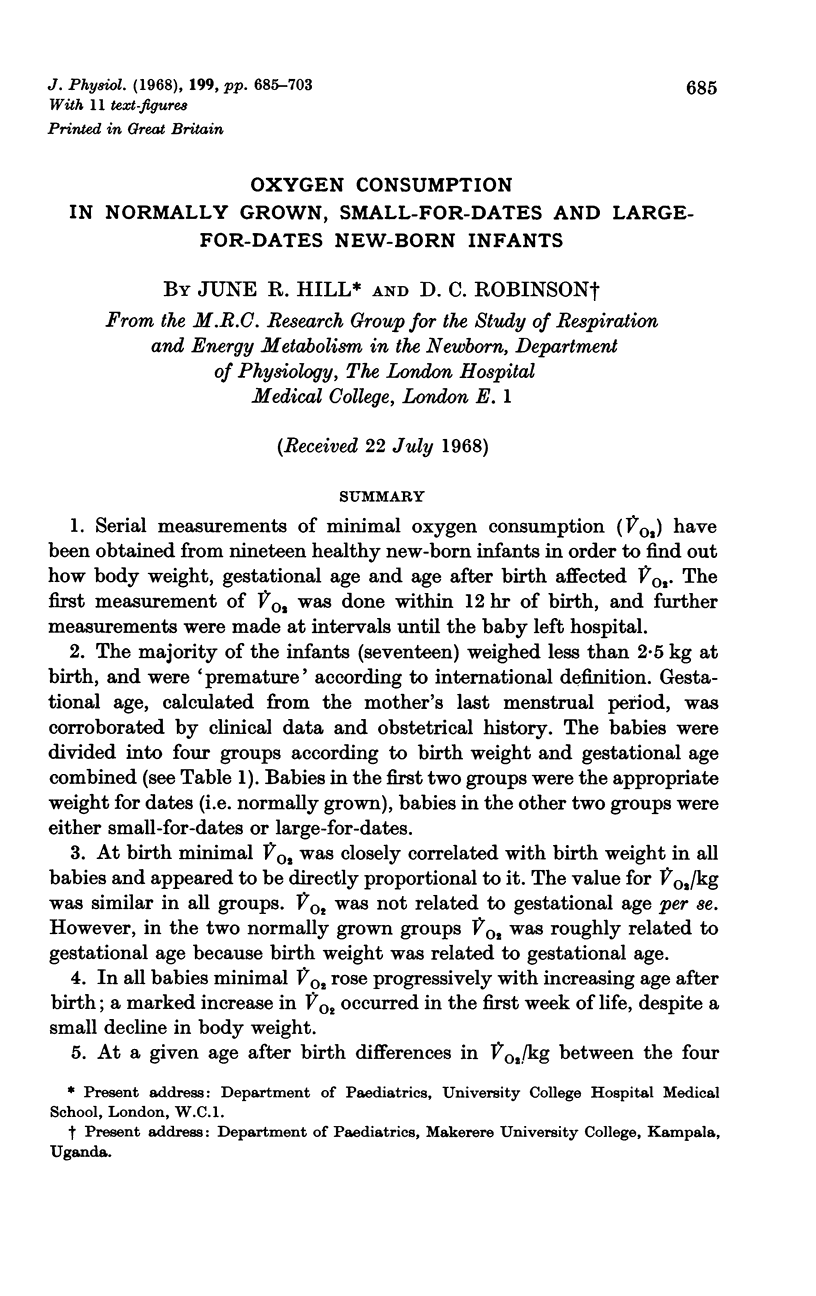


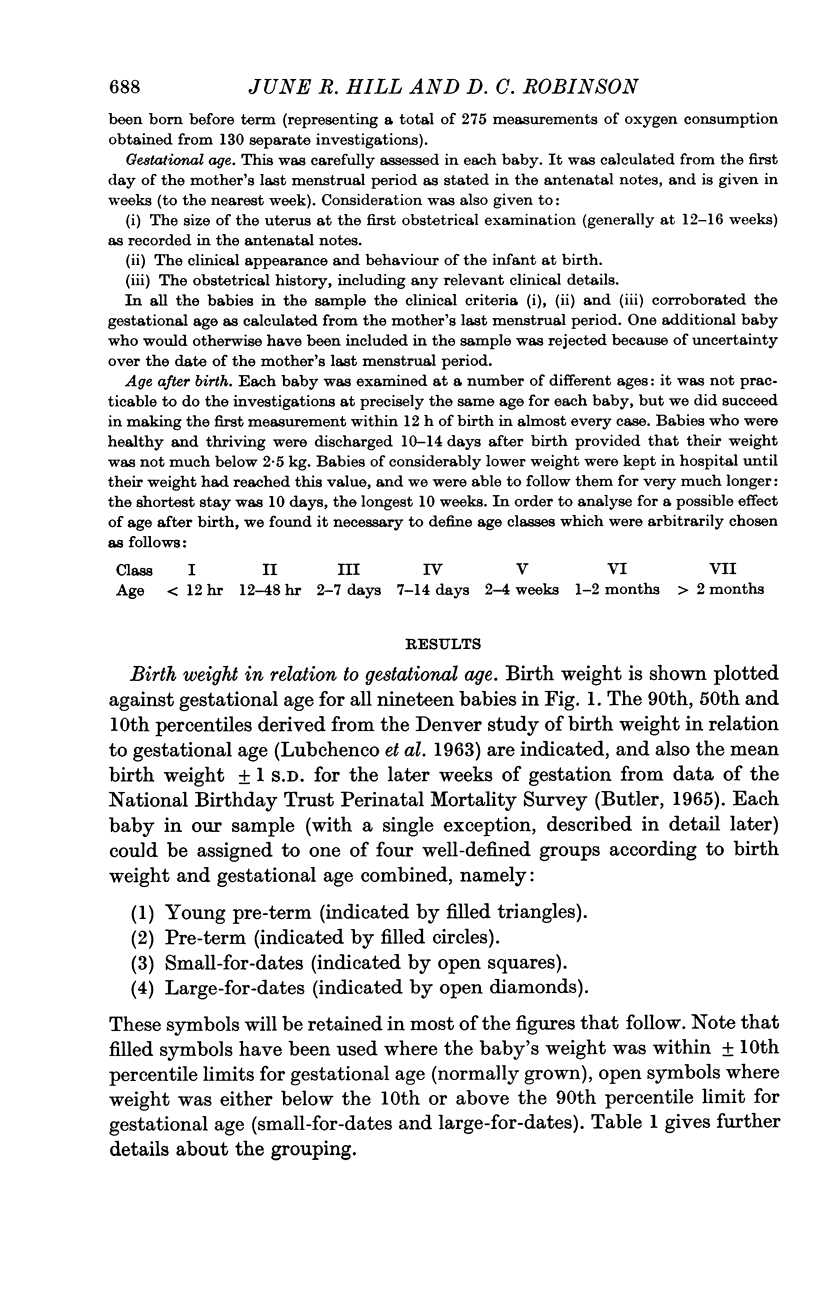
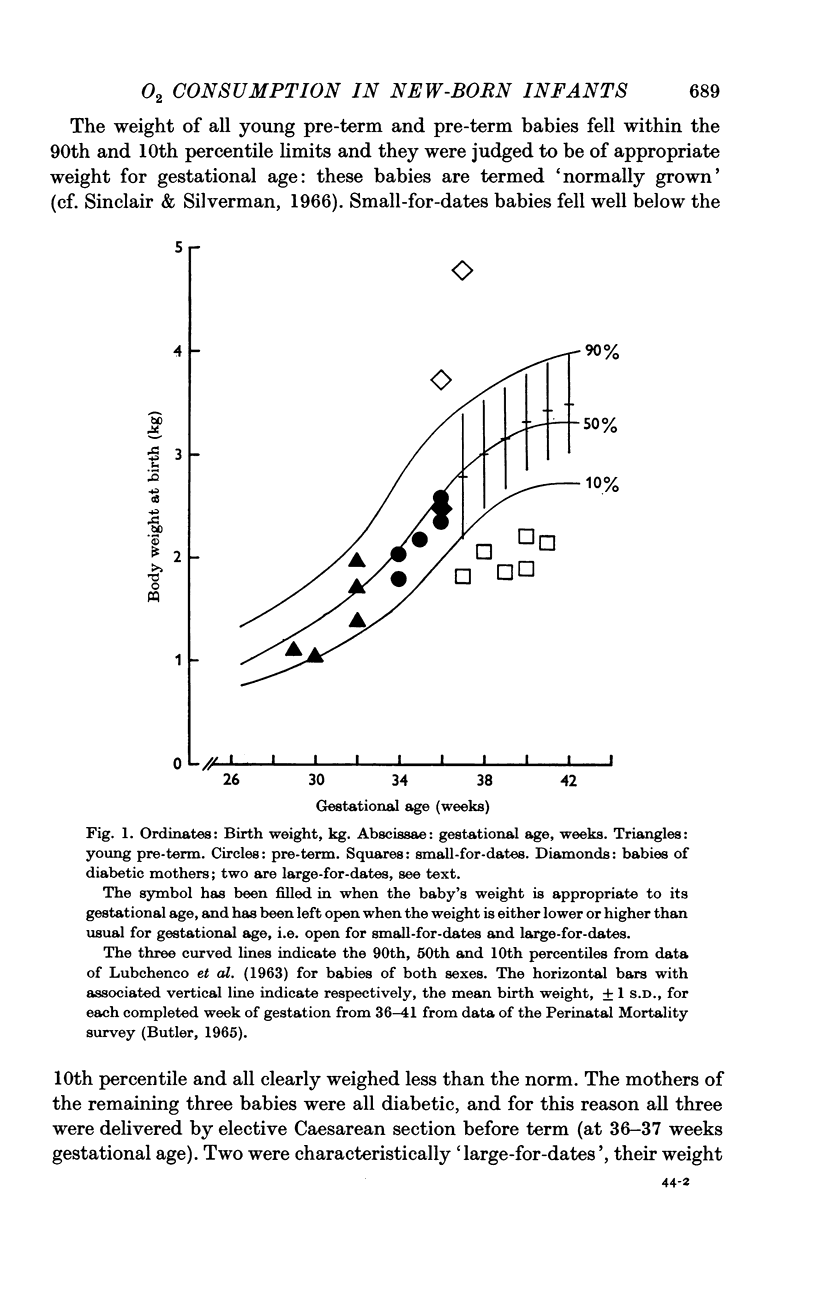
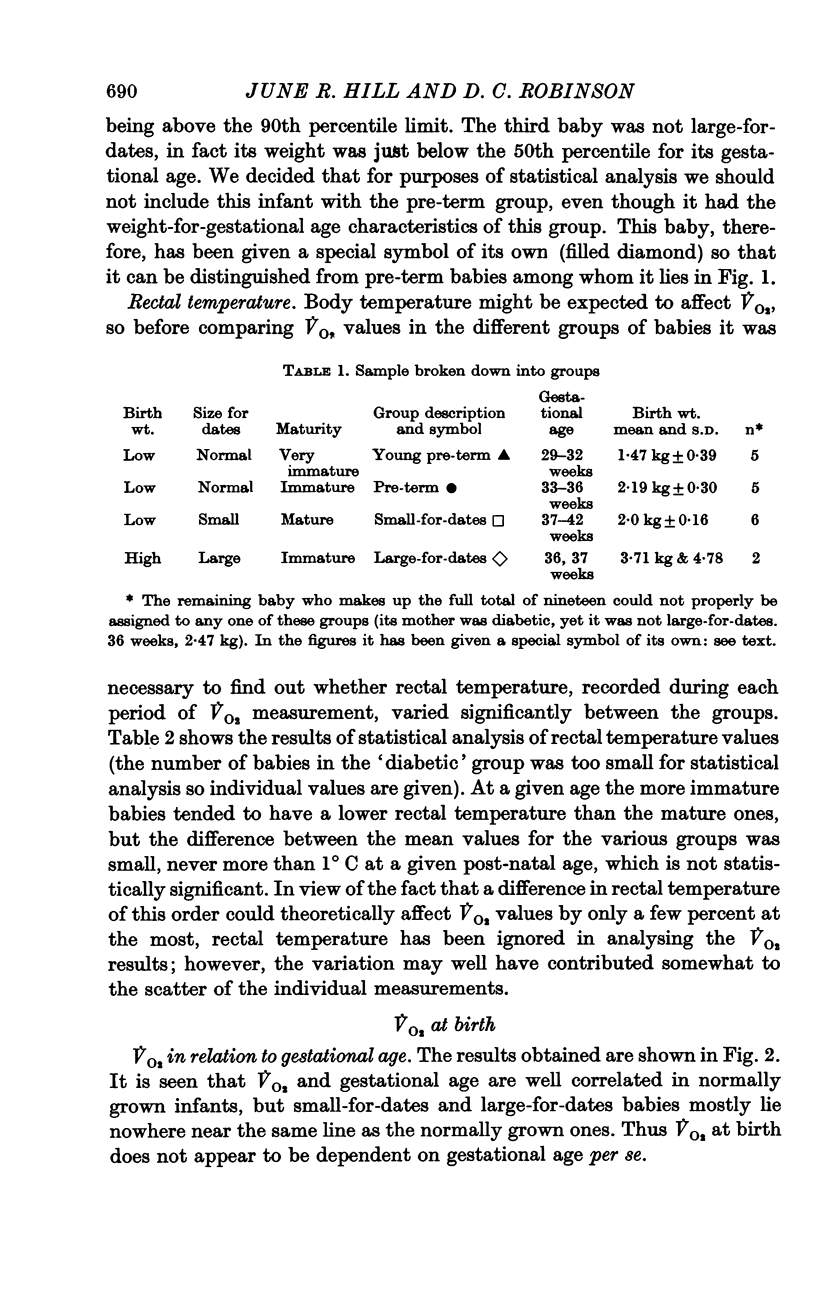
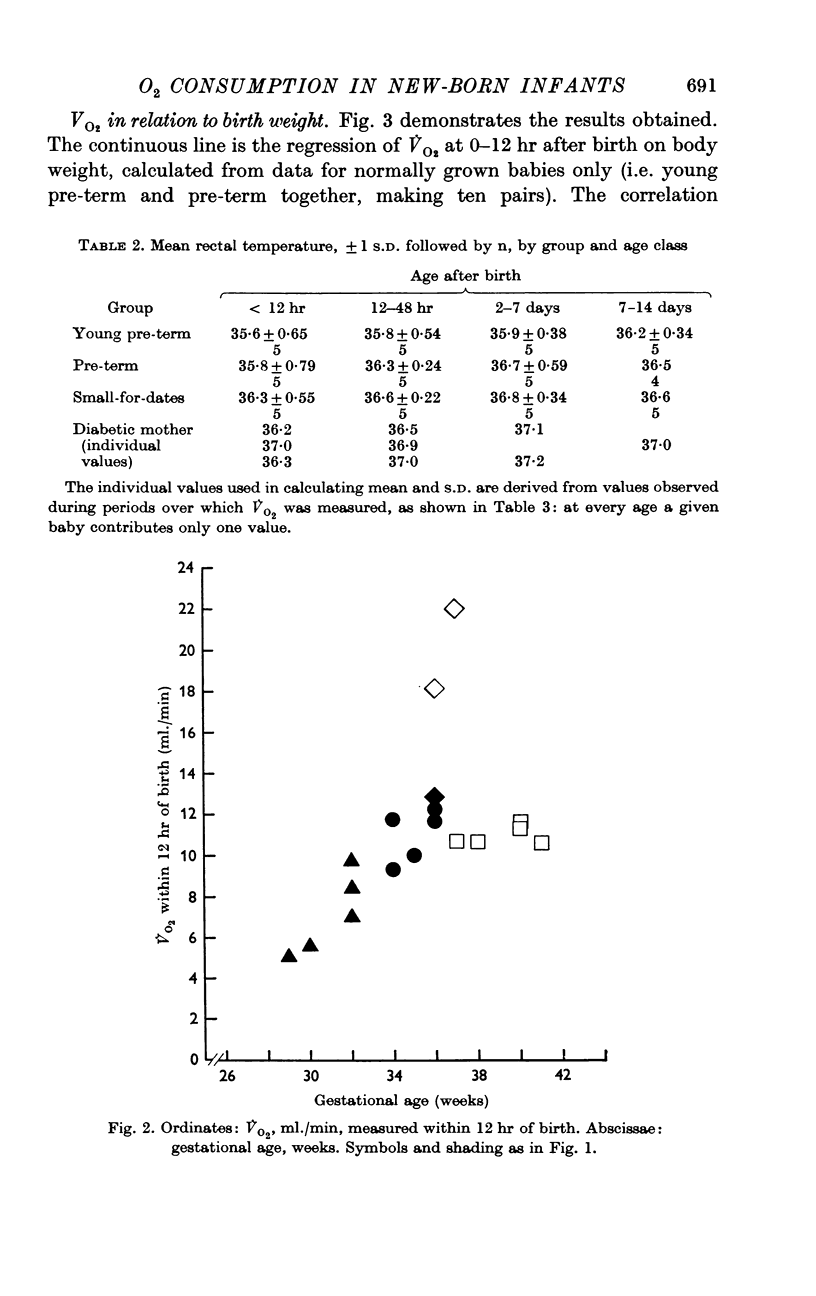
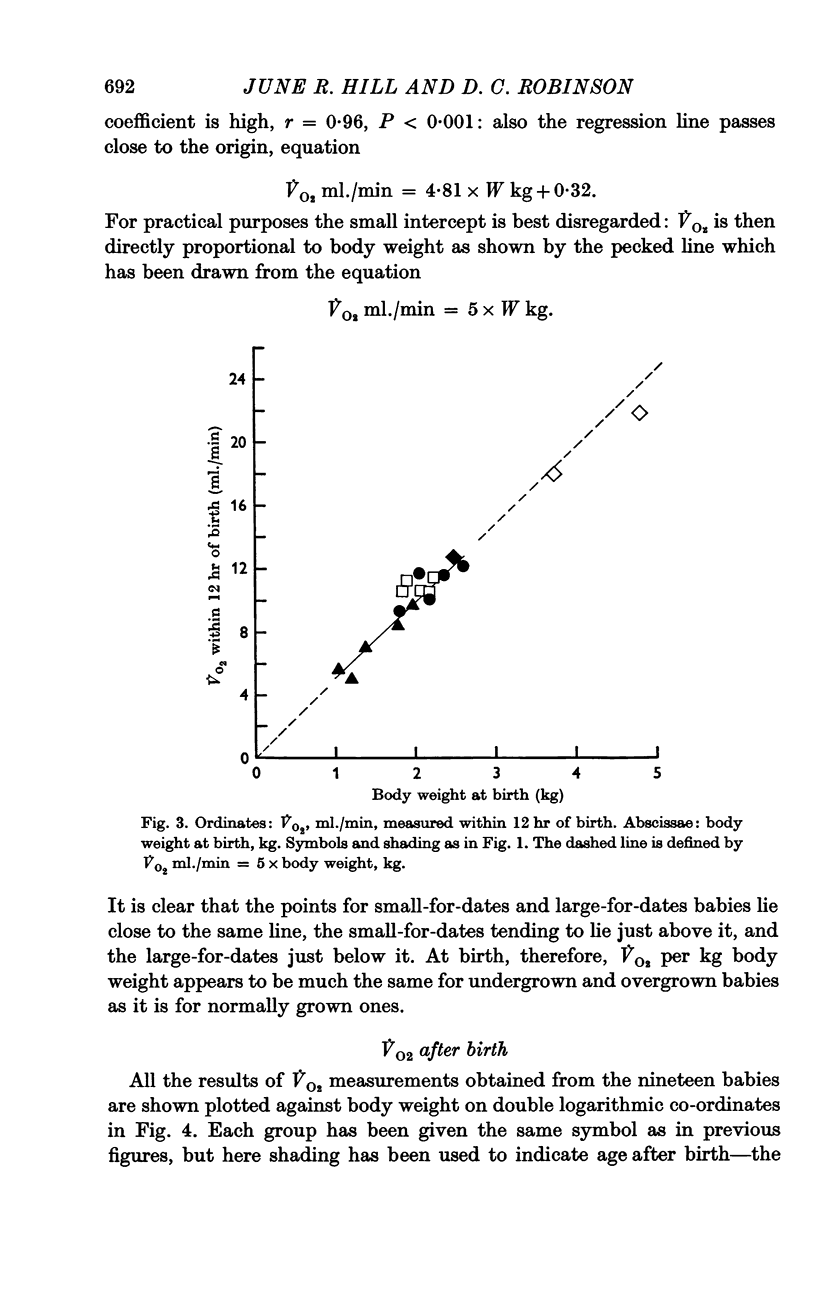

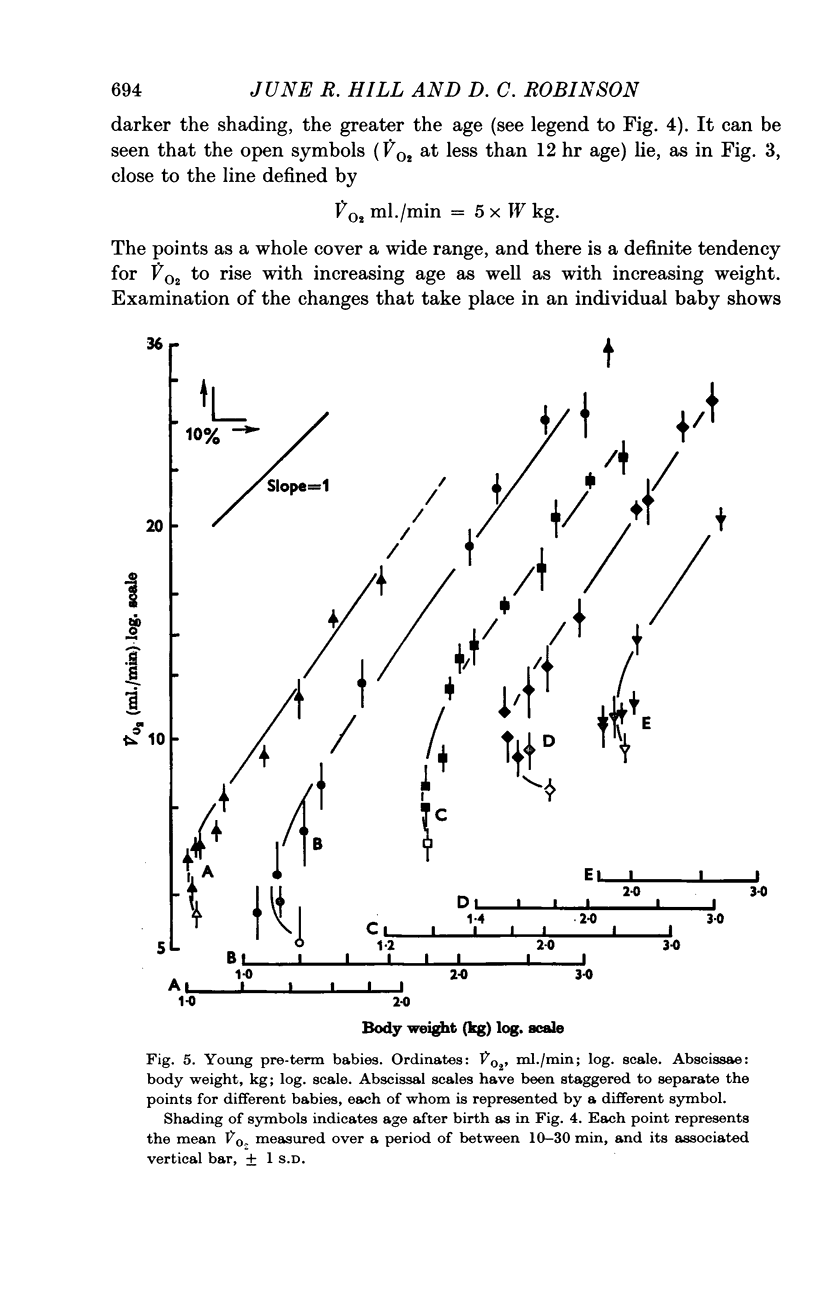
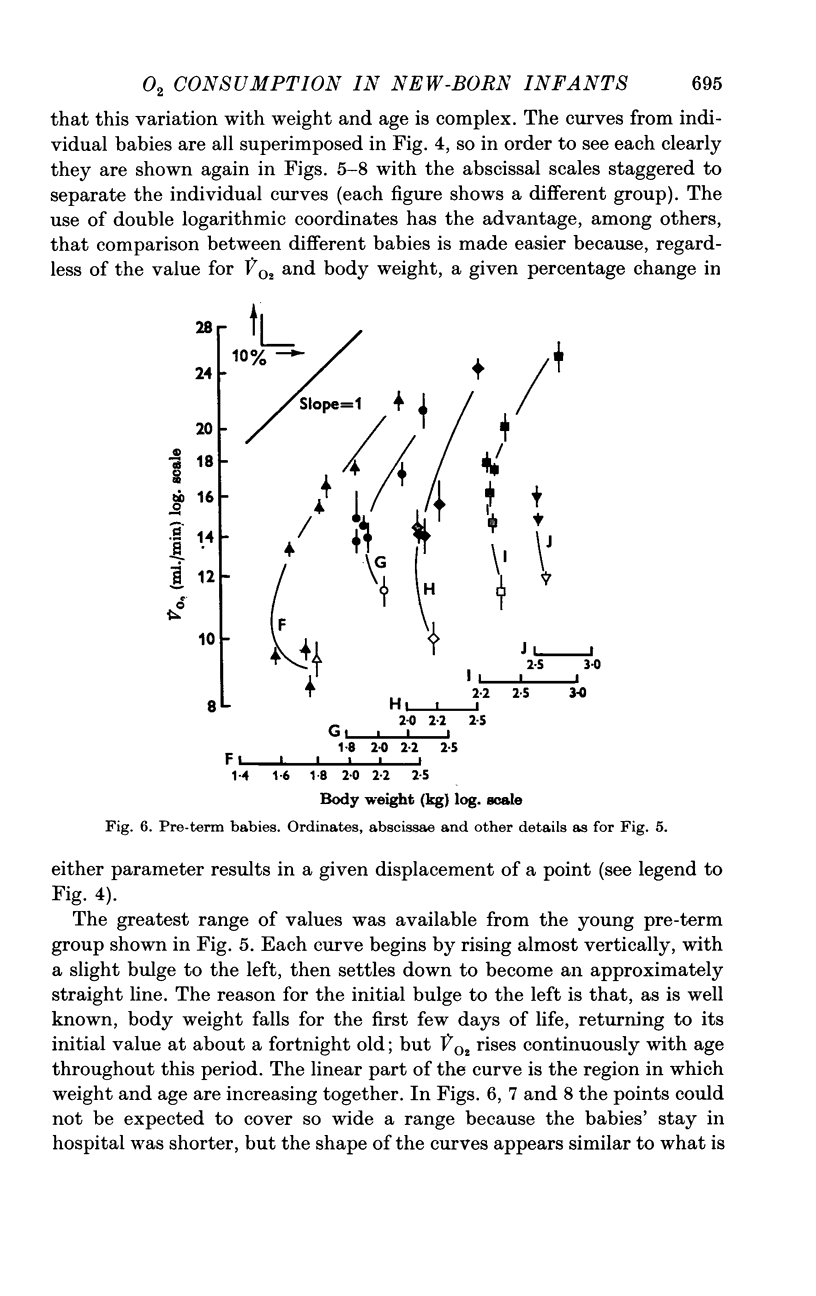
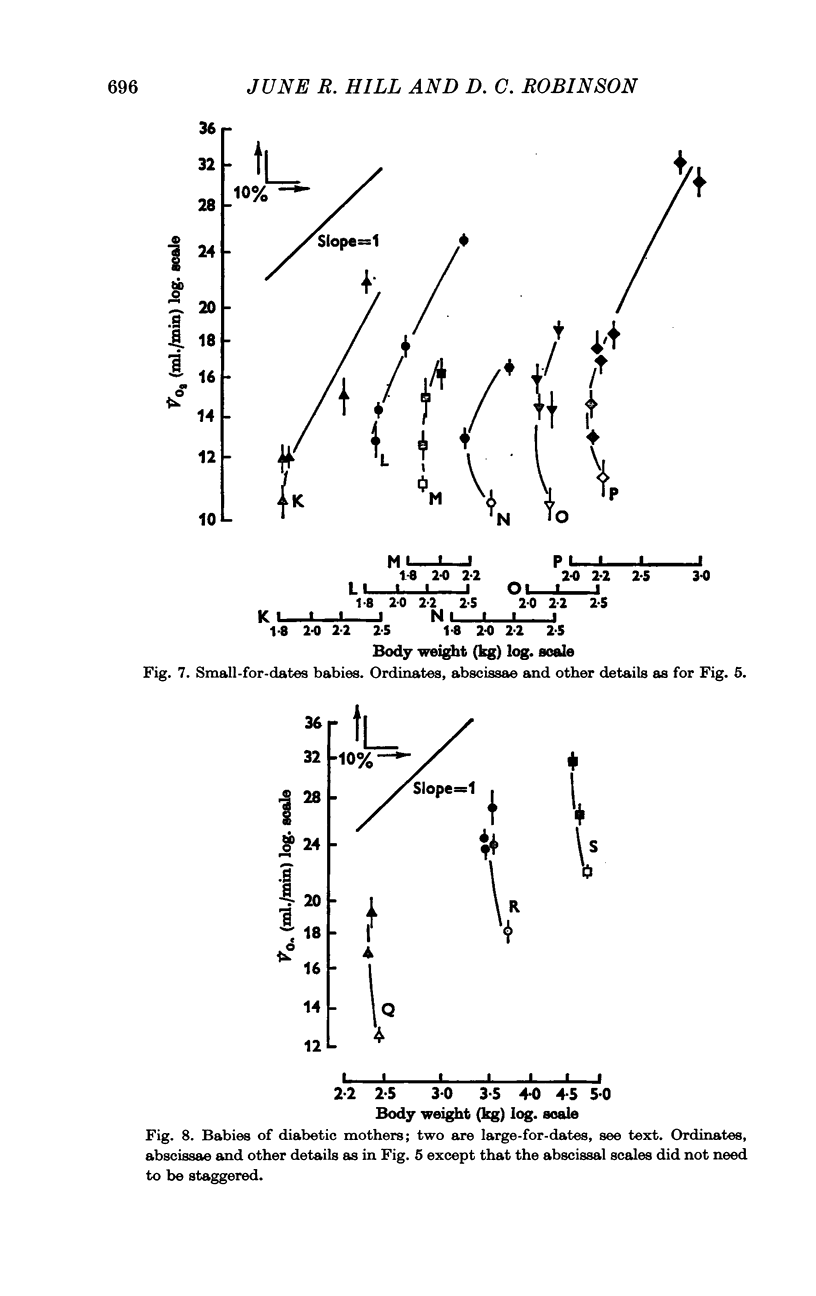
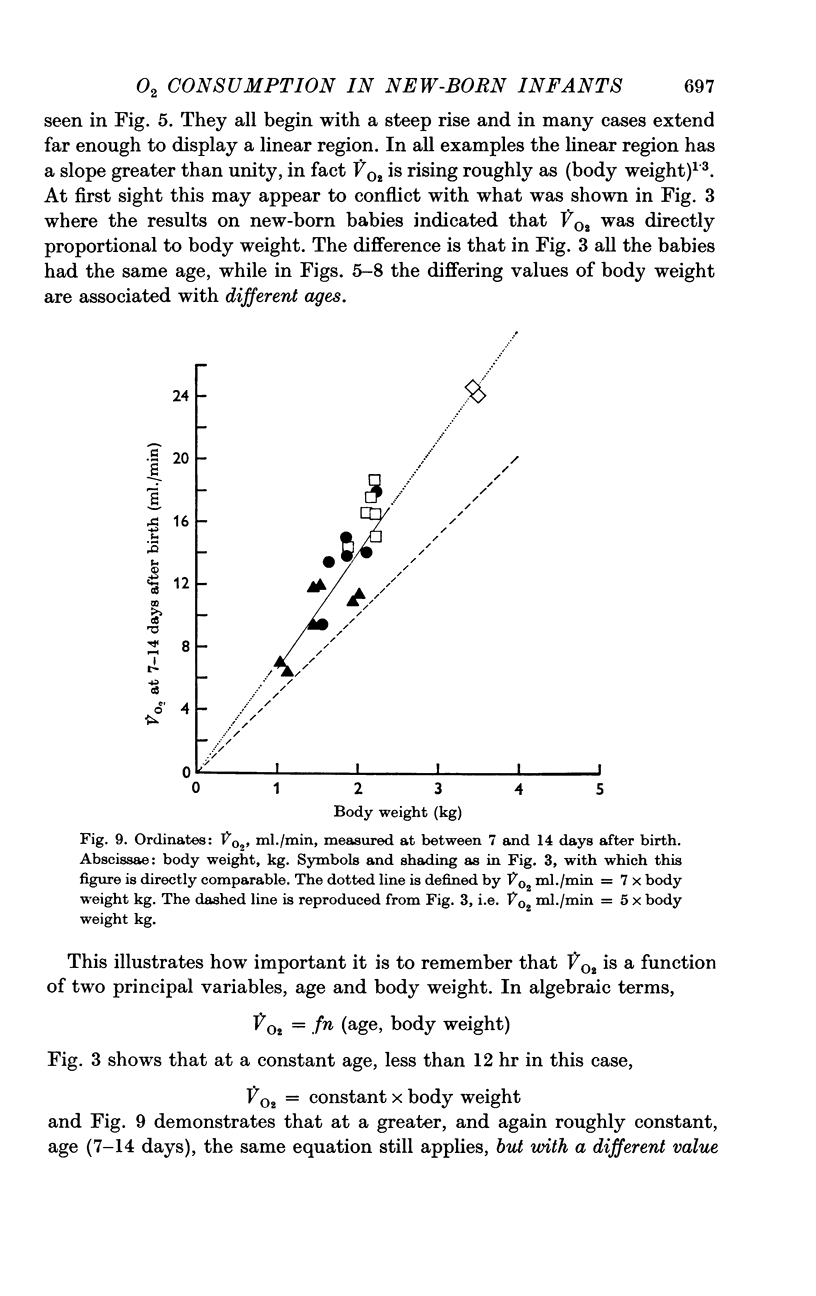
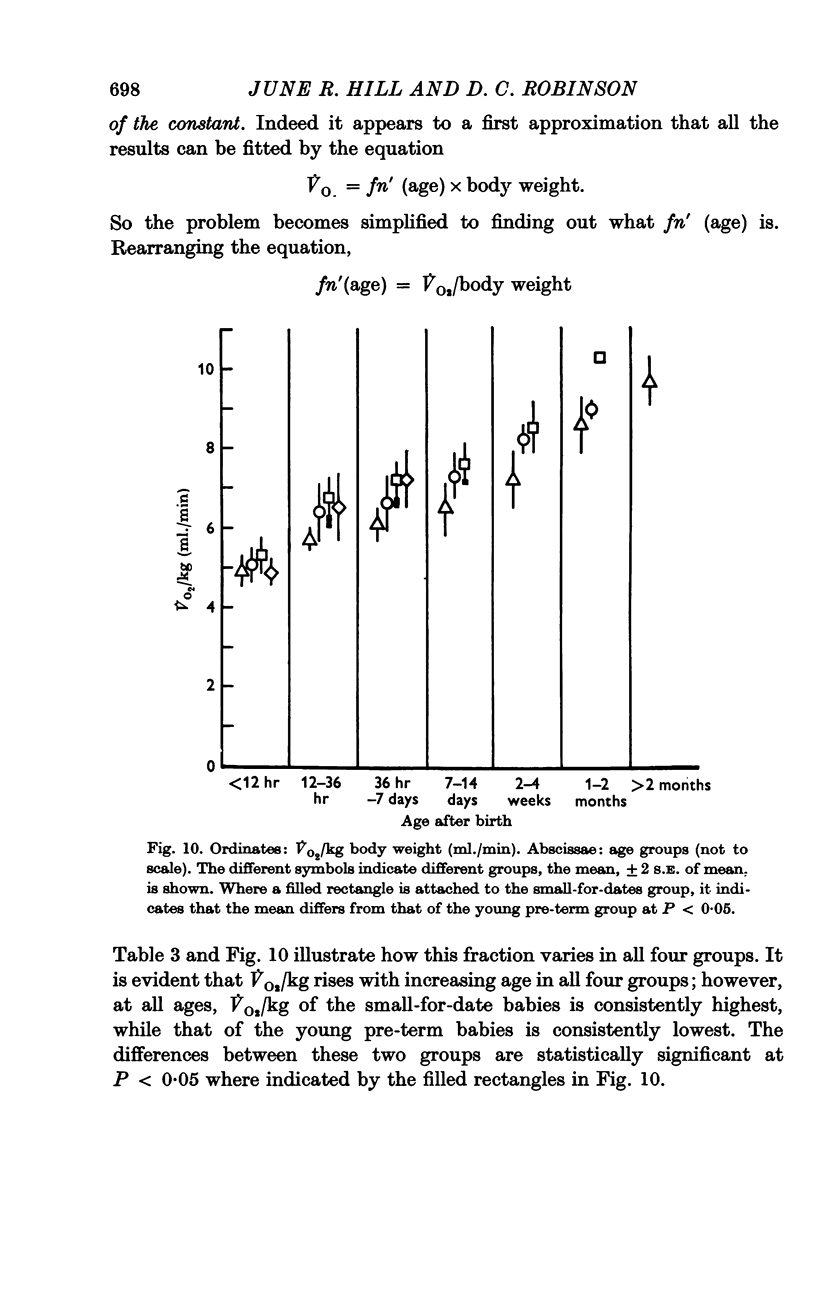


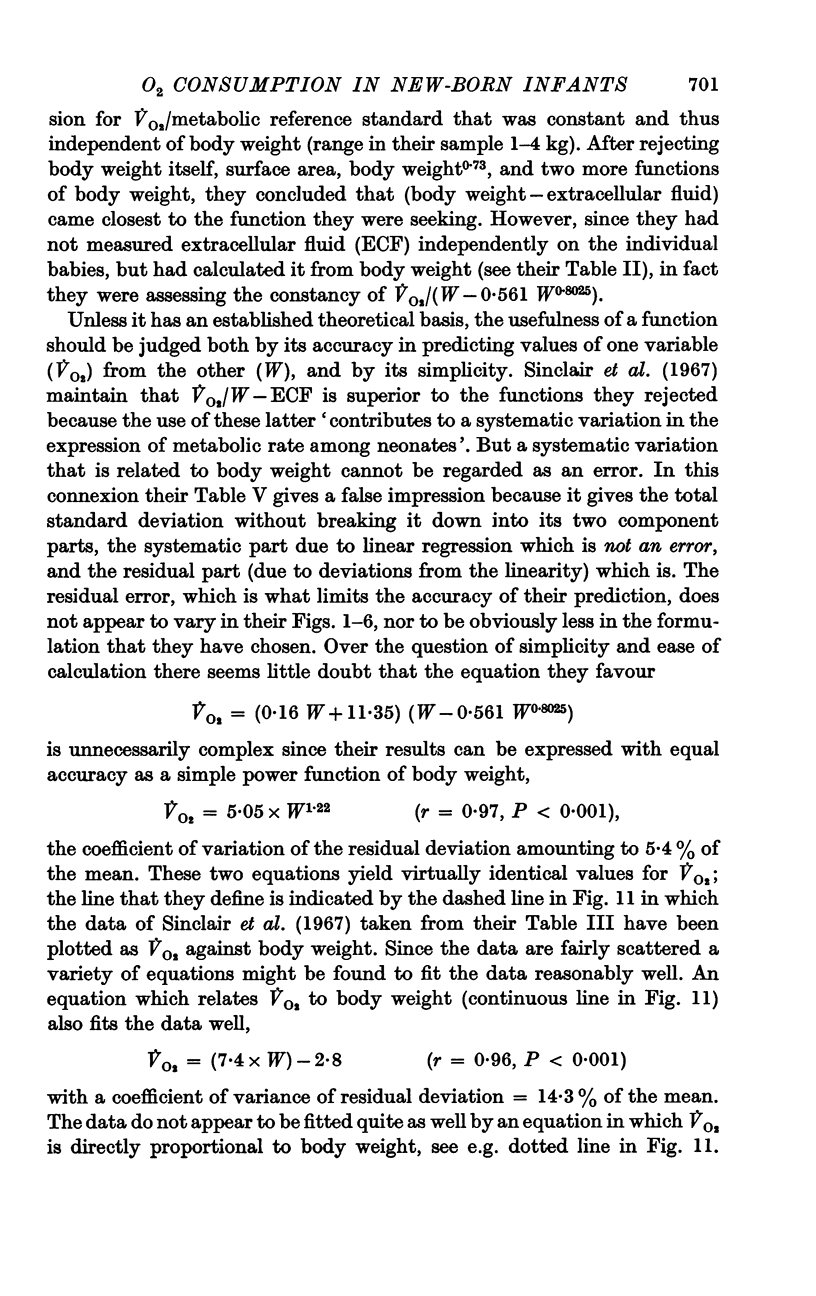
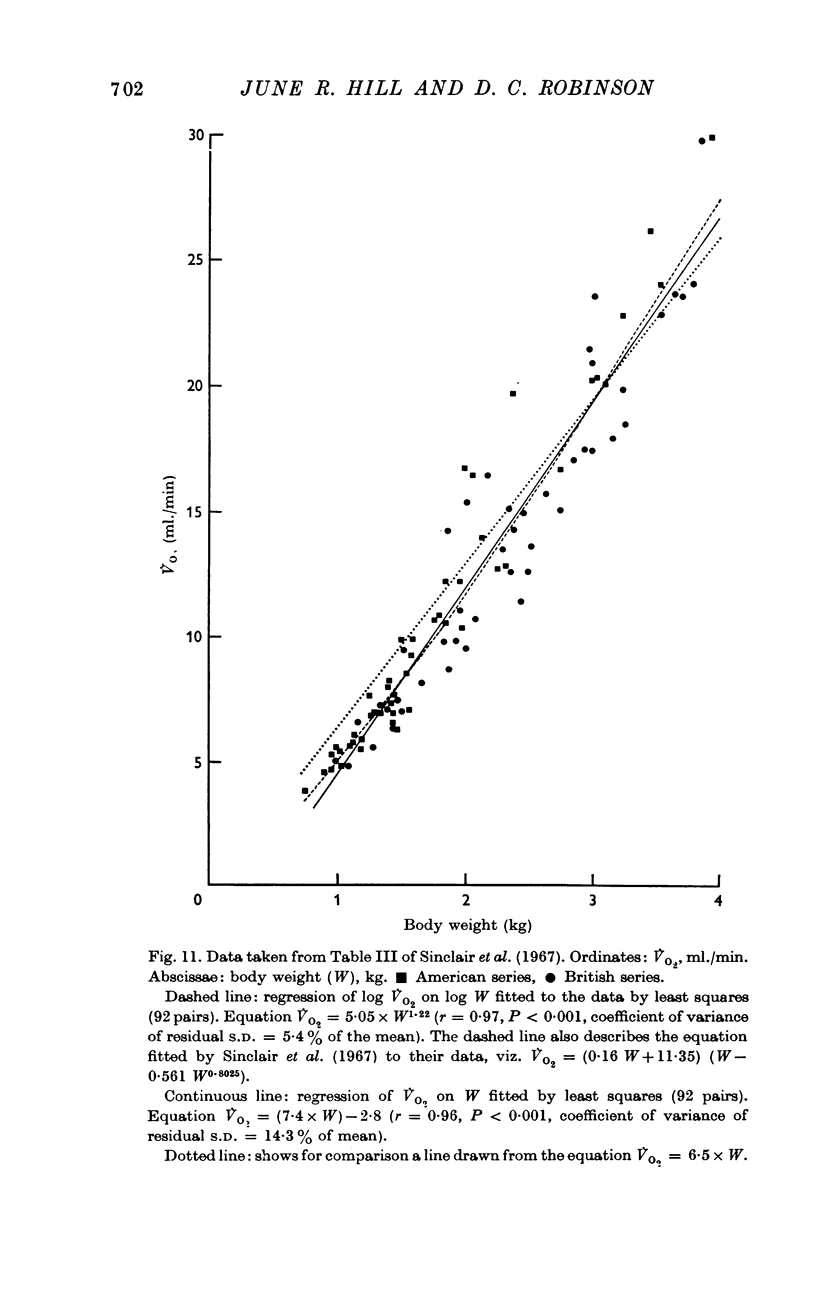

Selected References
These references are in PubMed. This may not be the complete list of references from this article.
- ADAMS F. H., FUJIWARA T., SPEARS R., HODGMAN J. GASEOUS METABOLISM IN PREMATURE INFANTS AT 32-34 DEGREES C AMBIENT TEMPERATURE. Pediatrics. 1964 Jan;33:75–82. [PubMed] [Google Scholar]
- ADAMSON S. K., Jr, GANDY G. M., JAMES L. S. THE INFLUENCE OF THERMAL FACTORS UPON OXYGEN CONSUMPTION OF THE NEWBORN HUMAN INFANT. J Pediatr. 1965 Mar;66:495–508. doi: 10.1016/s0022-3476(65)80114-7. [DOI] [PubMed] [Google Scholar]
- Hill J. R., Rahimtulla K. A. Heat balance and the metabolic rate of new-born babies in relation to environmental temperature; and the effect of age and of weight on basal metabolic rate. J Physiol. 1965 Sep;180(2):239–265. doi: 10.1113/jphysiol.1965.sp007701. [DOI] [PMC free article] [PubMed] [Google Scholar]
- KARLBERG P. [Determinations of standard energy metabolism (basal metabolism) in normal infants]. Acta Paediatr Suppl. 1952 Oct;41(89):1–151. [PubMed] [Google Scholar]
- LEVISON H., SWYER P. R. OXYGEN CONSUMPTION AND THE THERMAL ENVIRONMENT IN NEWLY BORN INFANTS. Biol Neonat. 1964;7:305–312. doi: 10.1159/000239934. [DOI] [PubMed] [Google Scholar]
- LUBCHENCO L. O., HANSMAN C., DRESSLER M., BOYD E. INTRAUTERINE GROWTH AS ESTIMATED FROM LIVEBORN BIRTH-WEIGHT DATA AT 24 TO 42 WEEKS OF GESTATION. Pediatrics. 1963 Nov;32:793–800. [PubMed] [Google Scholar]
- MESTYAN J., FEKETE M., BATA G., JARAI I. THE BASAL METABOLIC RATE OF PREMATURE INFANTS. Biol Neonat. 1964;7:11–25. doi: 10.1159/000239910. [DOI] [PubMed] [Google Scholar]
- Sinclair J. C., Scopes J. W., Silverman W. A. Metabolic reference standards for the neonate. Pediatrics. 1967 May;39(5):724–732. [PubMed] [Google Scholar]
- Sinclair J. C., Silverman W. A. Intrauterine growth in active tissue mass of the human fetus, with particular reference to the undergrown baby. Pediatrics. 1966 Jul;38(1):48–62. [PubMed] [Google Scholar]


